- Yale Framework |
- The Science Panel
The Science Panel
The Yale Framework is being developed by a science panel drawn from state and federal government agencies, universities, and from the for-profit and non-profit private sectors. The members were chosen for diverse and complementary expertise. The thirteen members are:
Paul Beier
 Paul Beier is a professor of conservation biology and wildlife ecology at Northern Arizona University. His 1988-1992 study of cougars documented that young cougars find and use habitat corridors to maintain gene flow among mountain ranges in urbanizing southern California. He has published 4 book chapters and 12 peer-reviewed publications related to wildlife linkage design. Beier co-authored two statewide maps of wildlife corridors, namely Arizona Wildlife Linkage Assessment (Nordhaugen et al. 2006; www.azdot.gov) and California Essential Habitat Connectivity (Spencer et al. 2010; www.dfg.ca.gov/habcon/connectivity). He co-produced 27 detailed linkage designs in California and Arizona, and packaged the GIS tools used in these efforts for free distribution (www.corridordesign.org). He was a lead author of the Science Report of the Wildlife Corridors initiative that was unanimously adopted by the Western Governors Association in 2008. In 2010, he helped the government of Bhutan develop a national framework for wildlife corridors. He is currently assisting in linkage design projects in the San Francisco Bay Area, and in the Mohave and Sonoran deserts. He is a founding member and current president of SC Wildlands (www.scwildlands.org) which specializes in collaborative efforts to conserve corridors, and is President of the Society for Conservation Biology during 2011-2013. Beier’s website is http://oak.ucc.nau.edu/pb1/
Paul Beier is a professor of conservation biology and wildlife ecology at Northern Arizona University. His 1988-1992 study of cougars documented that young cougars find and use habitat corridors to maintain gene flow among mountain ranges in urbanizing southern California. He has published 4 book chapters and 12 peer-reviewed publications related to wildlife linkage design. Beier co-authored two statewide maps of wildlife corridors, namely Arizona Wildlife Linkage Assessment (Nordhaugen et al. 2006; www.azdot.gov) and California Essential Habitat Connectivity (Spencer et al. 2010; www.dfg.ca.gov/habcon/connectivity). He co-produced 27 detailed linkage designs in California and Arizona, and packaged the GIS tools used in these efforts for free distribution (www.corridordesign.org). He was a lead author of the Science Report of the Wildlife Corridors initiative that was unanimously adopted by the Western Governors Association in 2008. In 2010, he helped the government of Bhutan develop a national framework for wildlife corridors. He is currently assisting in linkage design projects in the San Francisco Bay Area, and in the Mohave and Sonoran deserts. He is a founding member and current president of SC Wildlands (www.scwildlands.org) which specializes in collaborative efforts to conserve corridors, and is President of the Society for Conservation Biology during 2011-2013. Beier’s website is http://oak.ucc.nau.edu/pb1/
Douglas A. Boyce Jr.
 Ph.D. - 1989 Brigham Young University, Provo, UT. [Zoology and Wildlife Mgt.] M.S. - 1982 Humboldt State University, Arcata, CA. [Natural Resources] B.A. - 1974 Sonoma State University, Rohnert Park, CA. [Biology] Dr. Boyce pursued research in North, Central and South America focusing on birds of prey. Early in his career he was Chairman of Wilderness Research Institute (non-profit) and data manager and zoologist for The Nature Conservancy in Utah. He has worked for the U.S. Fish and Wildlife Service, the U.S. Bureau of Land Management, the National Park Service, and the U.S. Forest Service. As a Forest Service employee he held numerous positions in management and research including forest biologist, assistant district ranger, threatened and endangered species regional program manager, deputy program manager for a large multi-million dollar natural disturbance research program, a science coordinator for Alaska, and is currently the agency’s National Wildlife Ecologist. He chaired several committees that developed state-of-the-art forest management recommendations that have been used throughout the United States. His publications cover a variety of subject areas including a co-authored article appearing this fall in the Wildlife Professional on climate change. He has received numerous awards and was honored by the Chief of the Forest Service for his outstanding contribution to conserving birds. His community service includes serving as President of the Board of Directors for a city owned ski area, Chair of the city’s Sustainability Commission, served on a city climate change committee, served as an instructor for the American Red Cross, and volunteered for many years as a ski patroller for the National Ski Patrol in New Mexico, Oregon, and Alaska.
Ph.D. - 1989 Brigham Young University, Provo, UT. [Zoology and Wildlife Mgt.] M.S. - 1982 Humboldt State University, Arcata, CA. [Natural Resources] B.A. - 1974 Sonoma State University, Rohnert Park, CA. [Biology] Dr. Boyce pursued research in North, Central and South America focusing on birds of prey. Early in his career he was Chairman of Wilderness Research Institute (non-profit) and data manager and zoologist for The Nature Conservancy in Utah. He has worked for the U.S. Fish and Wildlife Service, the U.S. Bureau of Land Management, the National Park Service, and the U.S. Forest Service. As a Forest Service employee he held numerous positions in management and research including forest biologist, assistant district ranger, threatened and endangered species regional program manager, deputy program manager for a large multi-million dollar natural disturbance research program, a science coordinator for Alaska, and is currently the agency’s National Wildlife Ecologist. He chaired several committees that developed state-of-the-art forest management recommendations that have been used throughout the United States. His publications cover a variety of subject areas including a co-authored article appearing this fall in the Wildlife Professional on climate change. He has received numerous awards and was honored by the Chief of the Forest Service for his outstanding contribution to conserving birds. His community service includes serving as President of the Board of Directors for a city owned ski area, Chair of the city’s Sustainability Commission, served on a city climate change committee, served as an instructor for the American Red Cross, and volunteered for many years as a ski patroller for the National Ski Patrol in New Mexico, Oregon, and Alaska.
Jason Bulluck
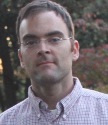 Jason Bulluck is the Natural Heritage Information Manager at the Virginia Department of Conservation and Recreation- Natural Heritage Program. He earned a Masters degree studying Avian Ecology and Geographic Information Systems at Appalachian State University in 2003. There he studied the use of southern Appalachian wetlands by breeding neotropical migratory songbirds, in the interest of determining how declining bird species are utilizing these rare and disappearing habitats. Beyond his Masters research Jason has participated various other bird research, conducted GIS contract work and worked as an Ecologist in the private sector. At Virginia Natural Heritage, Jason manages the development and implementation of statewide conservation planning tools and species models, and manages the maintenance, internal use and external dissemination of core Natural Heritage data with conservation partners.
Jason Bulluck is the Natural Heritage Information Manager at the Virginia Department of Conservation and Recreation- Natural Heritage Program. He earned a Masters degree studying Avian Ecology and Geographic Information Systems at Appalachian State University in 2003. There he studied the use of southern Appalachian wetlands by breeding neotropical migratory songbirds, in the interest of determining how declining bird species are utilizing these rare and disappearing habitats. Beyond his Masters research Jason has participated various other bird research, conducted GIS contract work and worked as an Ecologist in the private sector. At Virginia Natural Heritage, Jason manages the development and implementation of statewide conservation planning tools and species models, and manages the maintenance, internal use and external dissemination of core Natural Heritage data with conservation partners.
Craig Groves
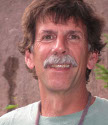 Craig Groves is currently the Director of Conservation Methods Team for the Conservation Science Division of The Nature Conservancy. He oversees a small group of scientists who improve and develop conservation planning and monitoring methods, tools, and applications for use by TNC field programs and partners. From 2002-2007 Craig worked as a conservation biologist and planner for the Wildlife Conservation Society in Greater Yellowstone as part of WCS’s North America Program. During that time period, he completed a wildlife conservation assessment for the Madison Valley MT, helped oversee several wildlife research projects, initiated a Duke Foundation-funded grant program for NGOs working with state wildlife agencies, led the development of a strategic plan for the Global Conservation Program of WCS, and served as a North American representative on IUCN’s Commission on Ecosystem Management. Earlier in his career, Craig launched the Idaho Natural Heritage Program (a cooperative biodiversity inventory program between TNC and state government) in 1984, worked as a nongame and endangered species biologist for the Idaho Department of Fish and Game, and served as the Director of Conservation Planning for TNC from 1997-2002 where he led the efforts to develop ecoregional plans. He has written and published a book on conservation planning (Drafting a Conservation Blueprint, Island Press 2003) as well as numerous popular and peer-reviewed articles on conservation planning and on the ecology of at-risk species in the Rocky Mountains. He and his wife Vicki reside in Bozeman, Montana and have spent the last 30 years living in the Rocky Mountains.
Craig Groves is currently the Director of Conservation Methods Team for the Conservation Science Division of The Nature Conservancy. He oversees a small group of scientists who improve and develop conservation planning and monitoring methods, tools, and applications for use by TNC field programs and partners. From 2002-2007 Craig worked as a conservation biologist and planner for the Wildlife Conservation Society in Greater Yellowstone as part of WCS’s North America Program. During that time period, he completed a wildlife conservation assessment for the Madison Valley MT, helped oversee several wildlife research projects, initiated a Duke Foundation-funded grant program for NGOs working with state wildlife agencies, led the development of a strategic plan for the Global Conservation Program of WCS, and served as a North American representative on IUCN’s Commission on Ecosystem Management. Earlier in his career, Craig launched the Idaho Natural Heritage Program (a cooperative biodiversity inventory program between TNC and state government) in 1984, worked as a nongame and endangered species biologist for the Idaho Department of Fish and Game, and served as the Director of Conservation Planning for TNC from 1997-2002 where he led the efforts to develop ecoregional plans. He has written and published a book on conservation planning (Drafting a Conservation Blueprint, Island Press 2003) as well as numerous popular and peer-reviewed articles on conservation planning and on the ecology of at-risk species in the Rocky Mountains. He and his wife Vicki reside in Bozeman, Montana and have spent the last 30 years living in the Rocky Mountains.
Kevin M. Johnston
 Kevin M. Johnston has been in software development at Esri (the developers of ArcGIS software) for the last 20 years focusing on the ArcGIS Spatial Analyst extension, the ArcGIS Geostatistical Analyst extension, and dynamic and statistical modeling. Kevin has an MLA in landscape architecture from Harvard University and a PhD from Yale University focusing on ecological modeling. Kevin has written a series of books, book chapters, and journal articles on spatial modeling, in particular on wildlife distribution and movement. He has developed several models exploring the effects of climate change on species distribution. In addition to working at Esri, as a volunteer Kevin has been working on elephant-movement models for Amboseli in Kenya, snow leopard corridor models in Nepal, and agent-based models for cougar movement in Flagstaff, Arizona.
Kevin M. Johnston has been in software development at Esri (the developers of ArcGIS software) for the last 20 years focusing on the ArcGIS Spatial Analyst extension, the ArcGIS Geostatistical Analyst extension, and dynamic and statistical modeling. Kevin has an MLA in landscape architecture from Harvard University and a PhD from Yale University focusing on ecological modeling. Kevin has written a series of books, book chapters, and journal articles on spatial modeling, in particular on wildlife distribution and movement. He has developed several models exploring the effects of climate change on species distribution. In addition to working at Esri, as a volunteer Kevin has been working on elephant-movement models for Amboseli in Kenya, snow leopard corridor models in Nepal, and agent-based models for cougar movement in Flagstaff, Arizona.
Mary Klein
 Mary Klein, the President and CEO of NatureServe, has been an active proponent for the conservation of species and ecosystems for more than 20 years. She served as the founding Chair of NatureServe’s first Board of Directors during 1999-2000. As President, Mary is responsible for providing leadership to the Board and staff in defining strategies, raising funds, engaging the member network, and overseeing the financial and operational management of NatureServe. Current NatureServe programs that Mary oversees include ecoregional assessments on behalf of the BLM, vulnerability assessments for the USFWS National Wildlife Refuges, species vulnerability assessments throughout the western hemisphere, and guidance to state efforts to map crucial habitats and wildlife corridors across the Western U.S. Prior to being selected as President & CEO, Mary held the position of NatureServe's Vice President of Network Operations where she coordinated efforts with Natural Heritage Programs. She has also supervised field research on at-risk species and ecosystems, led international programs, and worked to continually improve the products and services NatureServe develops in cooperation with its many partners. In the 1990s, Mary served at the state level as the Director of the Colorado and Montana Natural Heritage Programs and was appointed Adjunct Professor at Colorado State University. For 10 years Mary also worked in The Nature Conservancy’s Western Region, starting and supporting natural heritage programs, developing cooperative partnerships with federal agencies, and overseeing information technology infrastructure and systems planning. In addition to her work at NatureServe, Mary currently serves on the Scientific Advisory Board for the DOD’s Strategic Environmental Research Program (SERDP), the University of Florida’s Wildlife Ecology & Conservation Advisory Council, the IUCN Red List Partnership, the Roundtable for Climate Change, the Teaming With Wildlife Committee of the Association of Fish and Wildlife Agencies, and the Governing Board of the Global Biodiversity Information Facility (GBIF).
Mary Klein, the President and CEO of NatureServe, has been an active proponent for the conservation of species and ecosystems for more than 20 years. She served as the founding Chair of NatureServe’s first Board of Directors during 1999-2000. As President, Mary is responsible for providing leadership to the Board and staff in defining strategies, raising funds, engaging the member network, and overseeing the financial and operational management of NatureServe. Current NatureServe programs that Mary oversees include ecoregional assessments on behalf of the BLM, vulnerability assessments for the USFWS National Wildlife Refuges, species vulnerability assessments throughout the western hemisphere, and guidance to state efforts to map crucial habitats and wildlife corridors across the Western U.S. Prior to being selected as President & CEO, Mary held the position of NatureServe's Vice President of Network Operations where she coordinated efforts with Natural Heritage Programs. She has also supervised field research on at-risk species and ecosystems, led international programs, and worked to continually improve the products and services NatureServe develops in cooperation with its many partners. In the 1990s, Mary served at the state level as the Director of the Colorado and Montana Natural Heritage Programs and was appointed Adjunct Professor at Colorado State University. For 10 years Mary also worked in The Nature Conservancy’s Western Region, starting and supporting natural heritage programs, developing cooperative partnerships with federal agencies, and overseeing information technology infrastructure and systems planning. In addition to her work at NatureServe, Mary currently serves on the Scientific Advisory Board for the DOD’s Strategic Environmental Research Program (SERDP), the University of Florida’s Wildlife Ecology & Conservation Advisory Council, the IUCN Red List Partnership, the Roundtable for Climate Change, the Teaming With Wildlife Committee of the Association of Fish and Wildlife Agencies, and the Governing Board of the Global Biodiversity Information Facility (GBIF).
Gary Knight
Gary Knight is director of the Florida Natural Areas Inventory (FNAI), a state-based research program that collects, interprets, and disseminates ecological information critical to the conservation of Florida’s biodiversity. FNAI maintains expertise in a range of fields, including botany, zoology, ecology, land management, conservation planning, GIS, and data management. FNAI is administered by Florida State University and is a member of the NatureServe network of natural heritage programs. Gary serves on the Board of Directors of NatureServe, and he is a member of the Center for Plant Conservation’s Science Advisory Board. Gary has been professionally involved with the documentation and conservation of Florida’s biodiversity since 1985. He has a graduate degree in Biological Science from Florida State University. FNAI maintains comprehensive, statewide, spatial databases for conservation, including databases for rare plants and animals, conservation lands, environmental land acquisition projects, invasive exotic plants, and natural community mapping. Our scientists, GIS analysts, and conservation planners work closely with government agencies and non-government conservation organizations to inform conservation and land management decisions at federal, state, and local levels.
Josh Lawler
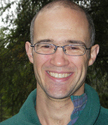 Joshua Lawler is an associate professor in the School of Forest Resources at the University of Washington. He received his BA from Bowdoin College and his MS and PhD in ecology from Utah State University. Since then he has served as a postdoctoral fellow with the Margaret Chase Smith Center for Public Policy at the University of Maine, a research associate of the National Research Council at the US Environmental Protection Agency, and a Nature Conservancy David H. Smith postdoctoral fellow at Oregon State University. His research interests generally lie in the fields of landscape ecology and conservation biology. He is most interested in how anthropogenic factors affect species distributions, population dynamics, and community composition at regional and continental scales. His current research involves investigating the effects of climate change on species distributions and populations, exploring the influence of landscape pattern on animal populations and communities, and addressing the issue of climate change for conservation planning and natural resource management.
Joshua Lawler is an associate professor in the School of Forest Resources at the University of Washington. He received his BA from Bowdoin College and his MS and PhD in ecology from Utah State University. Since then he has served as a postdoctoral fellow with the Margaret Chase Smith Center for Public Policy at the University of Maine, a research associate of the National Research Council at the US Environmental Protection Agency, and a Nature Conservancy David H. Smith postdoctoral fellow at Oregon State University. His research interests generally lie in the fields of landscape ecology and conservation biology. He is most interested in how anthropogenic factors affect species distributions, population dynamics, and community composition at regional and continental scales. His current research involves investigating the effects of climate change on species distributions and populations, exploring the influence of landscape pattern on animal populations and communities, and addressing the issue of climate change for conservation planning and natural resource management.
Kit Muller
Mr. Kit Muller was born and raised in Montana. He did his undergraduate work in social anthropology at Harvard University and his graduate work in economics and public policy at the University of California at Berkeley. Having worked for the U.S. Bureau of Land Management for close to 30 years, he is currently responsible for strategic planning for the agency. At the moment, he is devoting most of his time to guiding and coordinating the BLM’s efforts to more systematically understand and address landscape-scale changes in the American West including climate change, wildland –fire, invasive species, urban growth and industrial development. Prior to working for the BLM, Mr. Muller worked for a member of the U.S. Congress, the State of California, and a number of national and local non-governmental organizations.
John Pierce
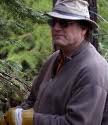 John Pierce has been the Chief Wildlife Scientist at the Washington Department of Fish and Wildlife (WDFW) since 1994, where he supervises wildlife research, GIS analysis, and wildlife data systems staff for the Department. He first started working at WDFW in 1984, soon after completing his Masters of Science degree in Wildlife Ecology at the University of Idaho, where he studied moose ecology in the woods of north-central Idaho. John completed a B.S. in wildlife science from the University of Washington in 1978. John has a longstanding interest in quantitative analysis of wildlife and habitat relationships. John was a member of the Washington Biodiversity Council Science Committee, and is committed to integrating citizen science into a long term biodiversity monitoring program for Washington State. John has been active in the Western Governor’s Crucial Habitat and Corridor Initiative since it began in 2007. John recently joined the Great Northern Landscape Conservation Cooperative Advisory Team. John has been an active member of the Washington Wildlife Habitat Connectivity Working Group, where he led a team in developing a Landscape Integrity approach to mapping wildlife connectivity landscapes in Washington.
John Pierce has been the Chief Wildlife Scientist at the Washington Department of Fish and Wildlife (WDFW) since 1994, where he supervises wildlife research, GIS analysis, and wildlife data systems staff for the Department. He first started working at WDFW in 1984, soon after completing his Masters of Science degree in Wildlife Ecology at the University of Idaho, where he studied moose ecology in the woods of north-central Idaho. John completed a B.S. in wildlife science from the University of Washington in 1978. John has a longstanding interest in quantitative analysis of wildlife and habitat relationships. John was a member of the Washington Biodiversity Council Science Committee, and is committed to integrating citizen science into a long term biodiversity monitoring program for Washington State. John has been active in the Western Governor’s Crucial Habitat and Corridor Initiative since it began in 2007. John recently joined the Great Northern Landscape Conservation Cooperative Advisory Team. John has been an active member of the Washington Wildlife Habitat Connectivity Working Group, where he led a team in developing a Landscape Integrity approach to mapping wildlife connectivity landscapes in Washington.
Jim Strittholt
 Jim Strittholt is founder and President of the Conservation Biology Institute located in Corvallis, Oregon and has over 16 years experience in applying computer mapping technologies (including GIS and remote sensing) to address various ecological assessments and conservation planning projects in the U.S. and internationally. He holds undergraduate degrees in Botany, Zoology and Secondary education from Miami University (Oxford, Ohio) where he also earned a Masters in Zoology in population genetics of vertebrates. Jim earned a Ph.D. in 1994 from Ohio State University in a self-designed multi-disciplinary program emphasizing landscape ecology, conservation planning, and computer mapping technologies. He has experience working with large mammals, field research on forests and vertebrates, and has over eight years high school and college teaching experience. Over the last 14 years, he has been principle investigator on numerous projects including nature reserve designs, conservation gap analyses, forest and watershed assessments, endangered species planning, ecological modeling, Internet tool development, and remote sensing applications in conservation. He has also authored numerous reports, peer-reviewed articles, and white papers. Areas of expertise include conservation planning, landscape ecology, forest conservation, vertebrate biology, geographic information systems, and remote sensing.
Jim Strittholt is founder and President of the Conservation Biology Institute located in Corvallis, Oregon and has over 16 years experience in applying computer mapping technologies (including GIS and remote sensing) to address various ecological assessments and conservation planning projects in the U.S. and internationally. He holds undergraduate degrees in Botany, Zoology and Secondary education from Miami University (Oxford, Ohio) where he also earned a Masters in Zoology in population genetics of vertebrates. Jim earned a Ph.D. in 1994 from Ohio State University in a self-designed multi-disciplinary program emphasizing landscape ecology, conservation planning, and computer mapping technologies. He has experience working with large mammals, field research on forests and vertebrates, and has over eight years high school and college teaching experience. Over the last 14 years, he has been principle investigator on numerous projects including nature reserve designs, conservation gap analyses, forest and watershed assessments, endangered species planning, ecological modeling, Internet tool development, and remote sensing applications in conservation. He has also authored numerous reports, peer-reviewed articles, and white papers. Areas of expertise include conservation planning, landscape ecology, forest conservation, vertebrate biology, geographic information systems, and remote sensing.
Dave Theobald
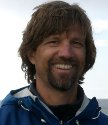 Dave is a landscape ecologist interested in understanding patterns of landscape change and their effects on wildlife habitat and biodiversity, especially in the Rocky Mountain west. He received his B.A. and Ph.D. from the Department of Geography, University of Colorado, Boulder, and his M.A. from Department of Geography, University of California, Santa Barbara. Recent projects he has led include leading an natural resource condition assessment of Rocky Mountain National Park, analyzing trade-offs in the effects of proposed planning policies on the sustainability of Ouray County, directing the inventory of open space and protected lands in Colorado (COMaP), developing national forecasts of development patterns that are consistent with climate change scenarios (called Integrated Climate and Land Use Scenarios), and identifying connectivity of natural landscapes at continental scales.
Dave is a landscape ecologist interested in understanding patterns of landscape change and their effects on wildlife habitat and biodiversity, especially in the Rocky Mountain west. He received his B.A. and Ph.D. from the Department of Geography, University of Colorado, Boulder, and his M.A. from Department of Geography, University of California, Santa Barbara. Recent projects he has led include leading an natural resource condition assessment of Rocky Mountain National Park, analyzing trade-offs in the effects of proposed planning policies on the sustainability of Ouray County, directing the inventory of open space and protected lands in Colorado (COMaP), developing national forecasts of development patterns that are consistent with climate change scenarios (called Integrated Climate and Land Use Scenarios), and identifying connectivity of natural landscapes at continental scales.
Steve Trombulak
 Dr. Stephen C. Trombulak is the Professor of Environmental and Biosphere Studies at Middlebury College (Vermont), holding faculty appointments in both the Department of Biology and the Program in Environmental Studies since 1985. His research encompasses questions related to landscape-scale conservation planning, wildlife ecology, and vertebrate natural history. His is the author of numerous journal articles on these subjects, and he is the author or editor of four books, the most recent, Landscape-scale Conservation Planning (edited with R.F. Baldwin) having been published by Springer in October 2010. From 2001 to 2008, he directed the Science Working Group for Two Countries, One Forest, a conservation NGO in the Northern Appalachian/Acadian ecoregion. He served as president of the North American section of the Society for Conservation Biology from 2004 to 2006. At Middlebury College he teaches courses on conservation biology, natural history, environmental science, and vertebrate anatomy.
Dr. Stephen C. Trombulak is the Professor of Environmental and Biosphere Studies at Middlebury College (Vermont), holding faculty appointments in both the Department of Biology and the Program in Environmental Studies since 1985. His research encompasses questions related to landscape-scale conservation planning, wildlife ecology, and vertebrate natural history. His is the author of numerous journal articles on these subjects, and he is the author or editor of four books, the most recent, Landscape-scale Conservation Planning (edited with R.F. Baldwin) having been published by Springer in October 2010. From 2001 to 2008, he directed the Science Working Group for Two Countries, One Forest, a conservation NGO in the Northern Appalachian/Acadian ecoregion. He served as president of the North American section of the Society for Conservation Biology from 2004 to 2006. At Middlebury College he teaches courses on conservation biology, natural history, environmental science, and vertebrate anatomy.
Dr. Oswald Schmitz of the Yale School of Forestry and Environmental Studies is the project lead.
William Singleton of Singleton Strategies LLC has worked with Dr. Schmitz to plan and oversee the process and help guide the Science Panel in its deliberations.


